Don't wanna be here? Send us removal request.
Text
2 Story for the animation
1st Story:
There was a kitty box shaped robot named Lily who lived in a plain and unexciting world where everyone in there are connected to a wire on a long pole. She had always felt like something was missing in her life, but she couldn't quite put her finger on what it was.
One day, while on a walk, she stumbled upon a drawing tablet lying on the ground. Curious, she picked it up and brought it home to investigate. After tinkering with it for a bit, she realized that she could use it to draw anything she wanted and watch as her creations came to life.
Lily had never been much of an artist, but with the draw tablet, she felt like she could explore her creativity in ways she never thought possible. She started experimenting with different art styles, from realism to cartoonish drawings, and even fantasy landscapes that she could only imagine in her wildest dreams.
One day, while drawing a beautiful and vibrant forest, she suddenly found herself transported into the world she had created on the tablet. She felt the cool breeze on her skin, heard the rustling of leaves and the chirping of birds. It was as if she had been transported to another world, one full of color and life.
Excited by her newfound ability, Lily continued to draw and explore different worlds. She went on adventures in fantastical landscapes, met new creatures, and experienced joy in ways she had never known before.
With each new drawing, there will be a photograph of lily's experience in each world she created on clipboard until she found a new part of herself, and as she explored these worlds, she began to realize that the real magic was inside of her all along. She didn't need the draw tablet to experience joy and creativity; it was within her all along.
And so, Lily put down the draw tablet and ventured out into the real world and the end.
2nd Story:
Once upon a time, there was a kitty box shaped robot named Lily who lived in a plain and boring world. Her days were filled with routine and monotony, and she longed for something exciting to happen in her life. One day, as she was walking home from school, she stumbled upon a strange object lying on the ground. It was a drawing tablet, and she had never seen anything like it before.
Curiosity got the best of Lily, and she decided to take the drawing tablet home with her. As she started to play with it, she realized that it was no ordinary tablet. Whenever she drew something on it, she could enter into the world she drew. This was the beginning of a new adventure for Lily.
Lily started to explore different art styles, and with each new style, she entered into a different world. She started with a cartoon style and entered into a world of bright colors and silly characters. Then she tried a realistic style and found herself in a world that was almost identical to her own. She explored impressionism, cubism, and many other styles, each time discovering a new world that was vastly different from the last.
As she traveled from one world to another, Lily felt her creativity and imagination growing. She felt like a child again, discovering new things and experiencing the world in a way that she never had before. She also found that each time she entered a new world, she left a piece of herself there. A part of her creativity and imagination stayed behind, enriching the world and making it more beautiful.
Lily spent months exploring different art styles and worlds, and each time she returned to her own world, she saw it in a new light. The colors were brighter, the shapes more interesting, and the people more unique. She realized that her world was not as plain and boring as she had thought. It was simply a blank canvas waiting for her to add her own colors and shapes to it.
In the end, Lily learned that creativity and imagination are not limited to the art world. They can be applied to every aspect of life, and when they are, the world becomes a more interesting and beautiful place. And so, armed with her new perspective, Lily set out to explore the world with fresh eyes and an open mind. She began to see the beauty in the mundane and the extraordinary in the ordinary. She became an artist in every sense of the word, bringing color and creativity to every part of her life.
0 notes
Text
A 50-word short summary of the project
In this project, I have confirmed and chosen the idea of making a short animation about make art be happy. I will be exploring different variations of different art styles, skill sets and more and combine them into a single animation. In the animation, there will be a character in a plain world getting a device and start exploring happiness by drawing and experiencing the world he/ she drew and start colouring his own world each time he drew and making his world colourful.
0 notes
Text
Part 1 format crashed move on to Part 2
www.tumblr.com/tongkachiunit06part2
0 notes
Text
Daniel Escudeiro Artist Research


One of the things that people appreciate about Daniel Escudero's art is its unique and distinctive style. His use of bold colours, geometric shapes, and intricate patterns creates visually stunning and attention-grabbing designs that stand out in a crowded digital landscape.
Another aspect of Escudero's art that resonates with people is its purpose. Many viewers are drawn to the social and environmental messages that he incorporates into his work, which can inspire them to take action and make things more eye-catching.
In addition to his artistic talent and message, Escudero is also known for his versatility and willingness to collaborate with others. His art has been featured in a wide range of settings, from large-scale installations to editorial illustrations and brand campaigns, which has helped to bring his unique style and message to a diverse audience.


Overall, I love Daniel Escudero's art for its creativity, message, and ability to produce and showcase his work, which I can inspire a lot into my work in future for both animations and 2D graphics.
I also love how he attributed his innovative and socially conscious approach to art, his mastery of digital tools, and his willingness to collaborate with others to bring his vision to life
Colour Theory:
After research and understanding his works, I have referenced the colour theory he have used, Im able to use the list of colour theoruies for the worlds I will be making for the animation, through using the colour theory, the worlds really brings out the emotion and feelings more effectively.
0 notes
Text
My Attempt of building a model with his artstyle *




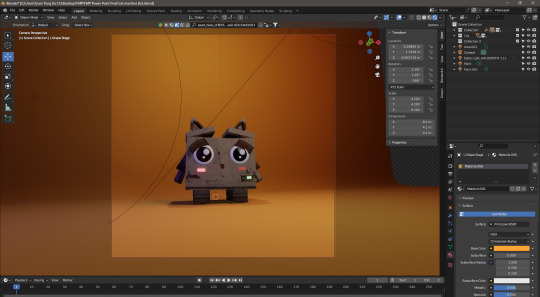
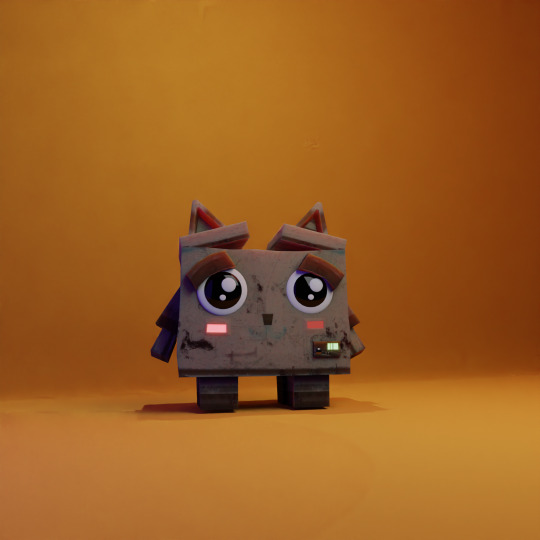
Using skills and art styles referenced from Southern Shorty from his works and tutorials, I'm able to create and rig a low poly character for the animation.
While making and texturing the model everything went really well, however, the rigging part for the character was confusing and complicated, which took me a few attempts and redo to finally created a working rig and Im satisfied with the result
0 notes
Text
SouthernShotty


SouthernShotty is a talented artist who is known for their unique art style, which combines elements of realism and cartoonishness to create eye-catching and memorable pieces.
Their art is highly detailed and often features bold, vibrant colors that draw the viewer in and create a sense of energy and excitement.


What I love about SouthernShotty's art is its ability to tell a story or convey a message. Their art often features characters with strong emotions or facial expressions, which help to communicate the intended message and create a deeper connection between the viewer and the artwork.


In terms of using SouthernShotty's skillsets for animation, I must have high attention to detail and the ability to create highly expressive characters could be valuable in creating compelling animated content while working on character designs and while modelling and animating.
The key to create a successful character design is to have great use of bold colors and strong visual elements could also help to create a memorable and visually striking animated world so that my work will be more memorable and eye-catching in the exhibition.
_____________________________________________________________
0 notes
Text
Will Anderson
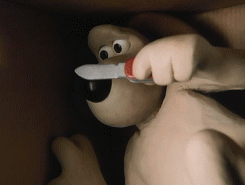

Will Anderson is a highly acclaimed animator and director from the United States. He is known for his work on various animated films and TV shows, such as "The Amazing World of Gumball" and "The Wrong Trousers". He has won numerous awards, including an Academy Award for his short film "The Making of Longbird" in 2013.
Anderson's work is highly regarded by audiences and critics alike. His animation style is unique and visually appealing, characterized by a combination of 2D and 3D elements. He is also known for his witty storytelling and comedic timing, which is evident in his work.
Many people reference Anderson's work in the modern world, particularly in the field of animation. His approach to combining 2D and 3D elements has influenced other animators to experiment with similar techniques. Additionally, his storytelling style has inspired many creators to incorporate humour and wit in their work.



If I am working on referencing Anderson's work for a 3D animation project, I will study his animation techniques and storytelling style to incorporate similar elements in my own work. I will also find inspiration in his use of color and composition and more if necessary.
0 notes
Text
Ainslie Henderson *


One of the most notable aspects of Henderson's artwork is his use of stop-motion animation. His animations are created using a combination of handcrafted puppets and sets, and digital post-production techniques. This approach gives his work a unique and tactile quality that is both visually stunning and emotionally resonant.
Another notable aspect of Henderson's artwork is his attention to detail. His handmade puppets and sets are highly detailed and intricate, with each element contributing to the overall aesthetic of the work. The result is a highly immersive and cohesive visual style that is both captivating and enchanting.
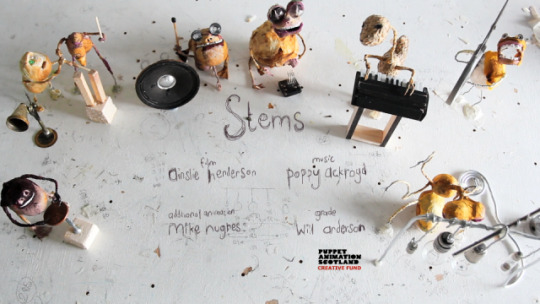

Overall, Henderson's artwork is highly original and visually stunning. His attention to detail and commitment to traditional techniques gives his work a unique and handmade quality that is rare in contemporary art. His work is a testament to the power of creativity and imagination and is sure to inspire and delight audiences for years to come.


_____________________________________________________________
My Review:
I love how his pieces of works have great uses of emotional resonance his artworks and pieces can really touch the hearts of viewers effectively and they definitely can inspire viewers.
Secondly, the unique style of stop motions of puppets made by unconventional and waste products ethically will help my models in future effectively and stylishly.
Third is that no matter whether he uses unconventional and waste products for props and puppets, he has good attention to detail and is often filled with intricate patterns, textures and designs.
Lastly is the playfulness and storytelling of his pieces. The Bright colors, and quirky characters with unexpected objects really support the feeling of the works and it feels like it belongs in a dream world. The storytelling of the puppets and props works effectively together and makes it look unique. In future, these skill sets can be used effectively in my future artworks for both 2D and 3D animations or other styles.

_______________________________________________
Final character production in Blender inspired by Ainslie Henderson's Art Style.

I am satisfied with the character that I was able to create in Blender using a variety of techniques and tools. By incorporating simple shapes and waste objects from real life, I was able to create something unique and visually interesting. Additionally, by referencing the art style of Ainsile's art style and utilizing techniques such as UV mapping, sculpting, and nodes, I was able to bring the character more alive and can definitely feel the art style from Ainslie.
What I love most about the character I created is the attention to detail that went into every aspect of the design. From the clay textures used in sculpting to the rust texture that helped to enhance the character's storytelling capabilities, I was able to experiment with different materials and techniques in order to achieve the desired effect.
I would highly recommend and the reason why I create it using Blender is because the software has an incredible range of creative freedom and allows doing 2D and 3D in different art styles.
But what I don't like about Blender is that while creating artwork using this software, the amount of time and practice are huge and it's definitely not new-users friendly, however for people who are advanced in it, it's possible to create something truly unique and impressive.
I have used different techniques in Blender including UV mapping, Sculpting and lots of node skills to create the special look of the character.
The clay textures with the sculpturing part definitely make the model more unique and realistic and also the rust texture I created brings the story-telling behind the character to a higher level.
0 notes
Text
Flashback (1992)
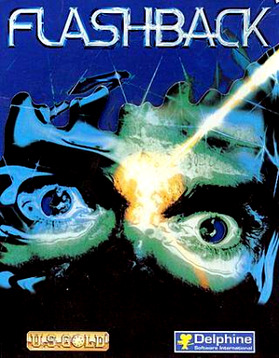

Flashback (1992) is a classic side-scrolling action-adventure game that was first released for Amiga, but later on, it also became available on other platforms, including PC and consoles. The game is known for its cinematic cutscenes, rotoscoped animations, and immersive storyline.
The Works: Flashback (1992) is widely regarded as one of the most innovative and technically advanced games of its time. The game's use of rotoscoping techniques, which involved tracing live-action footage frame by frame to create fluid animations, set a new standard for character movements in video games, which can be really useful for my final animation and can be used in one of my artstyle scenes for a different style in a different world my character will explore. Additionally, the game's intricate plot, puzzles, and action sequences all work cohesively to create a compelling and engaging visual and gaming experience.
Artstyle: Flashback (1992) features a distinctive cyberpunk artstyle that mimics the styles of popular media at the time, including movies like Blade Runner and the anime Akira. The game's use of intricate background details, neon lights, and futuristic technology all contribute to a visually striking and memorable world that feels both immersive and stylized and I will be research more information about it to understand and use this feature in my animation more effectively
The use of rotoscoped animation in "Flashback" is one of the game's most notable stylistic features. This technique involves filming real actors and then tracing their movements frame-by-frame for use in the game. The result is a highly detailed and lifelike animation style that sets "Flashback" apart from other games of its time.
Another notable aspect of the game's art style is its use of color. "Flashback" features a muted, monochromatic color palette that is reminiscent of classic science fiction films and literature. The use of color in the game is effective in creating a moody and atmospheric world that feels cohesive and consistent throughout.

What I like: What I like about the game's art style is its use of color. "Flashback" features a muted, monochromatic color palette that is reminiscent of classic science fiction films and literature. The use of color in the game is effective in creating a moody and atmospheric world that feels cohesive and consistent throughout. To achieve the style for my animation can be challenging, but understanding and using it effectively can be rewarding for the final outcome.
What I dislike: The style and skills they used to produce are interesting and unique, but to suit it into my animation about changing different artstyle per world is extremely difficult and maybe time-consuming if I have to use and explore different artstyle in details. But overall I do love this artstyle and will definitely use the skills for my fmp.
The references I can use for 3D Blender animation project: Flashback (1992) can serve as an excellent source of inspiration and reference for a 3D Blender animation project about Makes Art Be Happy. The game's artstyle, use of rotoscoping, and attention to detail can inform the design of characters, settings, and animations within the project. Additionally, the game's puzzles and action sequences can be serve as the environment design and for creating engaging and challenging gameplay mechanics within the project.


0 notes
Text
Into The Spider-Verse *


Works:
Into The Spider-Verse is an animated movie that has taken the animation industry by storm with its unique art style and mesmerizing storytelling. The movie's plot revolves around the concept of parallel universes where different versions of Spider-Man exist. The animation is a perfect example of a modern masterpiece as it employs a blend of 2D and 3D animation styles to create a visually stunning experience.
Artstyle:
The art style of Into The Spider-Verse is a fusion of various animation styles that come together in perfect harmony. The movie employs several techniques to create its distinct look, including comic book-style animation, the use of half-tone dots, and a mix of 2D and 3D animation. The movie's art style helps to create a world that is both familiar yet unique and makes it stand out from other animated movies.

What I like:
The thing I like most about Into The Spider-Verse is its unique art style. The combination of different animation techniques creates a visually stunning experience that is unlike anything I have seen before. Another aspect that I like is the movie's story; the plot is engaging, and the characters are well-developed, which helps to create an emotional connection with the audience.
What I dislike:
One drawback of the movie is that it can be overwhelming at times. The combination of different animation styles and fast-paced action sequences can be difficult to follow, which can detract from the overall viewing experience. Additionally, some of the characters' accents and dialogue can be a bit difficult to understand, which can detract from the storytelling.
______________________________________________________________
References for 3D Blender animation project:
Into The Spider-Verse can serve as an excellent reference for a 3D Blender animation project about Makes Art Be Happy. The movie's art style and fusion of different animation techniques can inspire the creation of unique and visually striking character designs and environments. The movie's use of comic book-style animation can also inspire the creation of motion graphics and special visual effects within the project. Additionally, the movie's engaging plot and well-developed characters can serve as a blueprint for creating compelling narratives and character arcs within the project.
0 notes
Text
PNG Sequencing


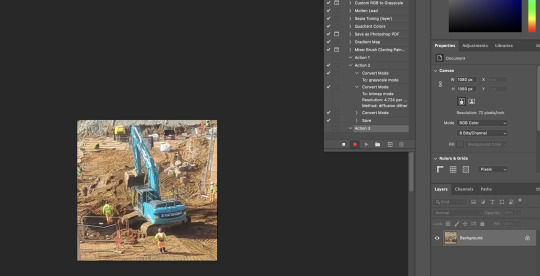
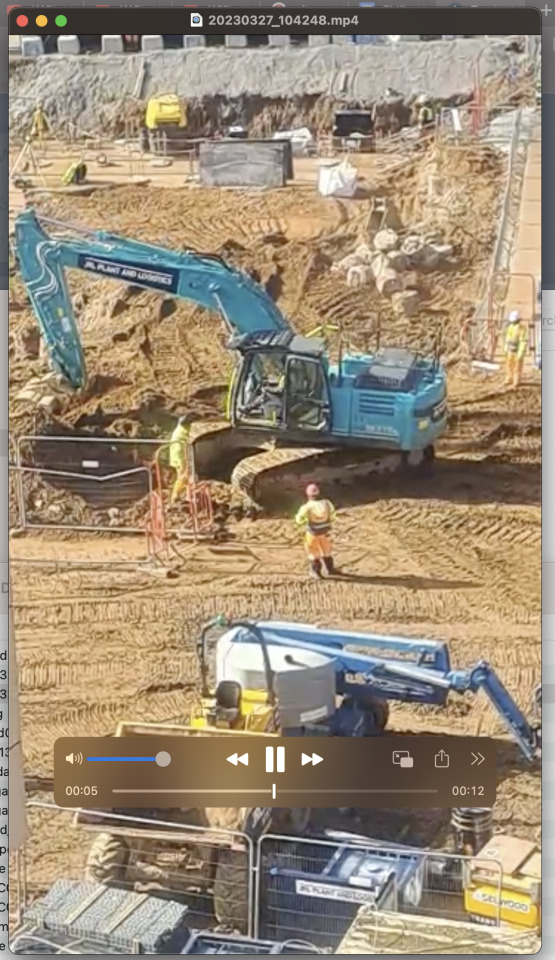
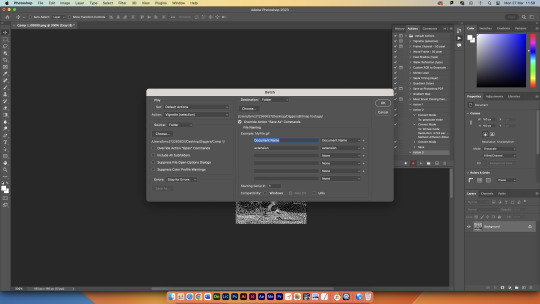


PNG sequencing is a skill set that involves the creation and manipulation of PNG images to create an animated sequence. A PNG file is a type of image file that supports transparency, making it a popular choice for animating graphics.
PNG sequencing involves creating a series of PNG images, each representing a single frame of an animation. These images are then combined into a sequence using software like Adobe After Effects or Photoshop.
One of the techniques commonly used in PNG sequencing is the creation of transparent regions within the PNG image using alpha channels. This allows for the creation of composite images, where multiple PNG files are layered on top of each other to create a final image. This technique is commonly used in the creation of complex animations, where the movement of different elements in the animation must be choreographed precisely.
One of the great things about PNG sequencing is its versatility. It can be used to create anything from simple animated icons to full-length animated films. However, one drawback to PNG sequencing is the amount of time and effort required to create each individual PNG image. This can make it a slow and labour-intensive process, particularly for longer animations
____________________________________________________________
Skill for 3D Blender animation project:
PNG sequence is a useful skill in 3D animation as it provides a way to store individual frames of animation in a lossless file format. When creating 3D animations in Blender, users often render out their scene as a series of individual frames that make up the final animation. By saving these frames in a PNG sequence, users can ensure that each frame is of high quality and can be edited or manipulated later without sacrificing any visual fidelity.
In Blender, users can load a PNG sequence into the Video Sequence Editor (VSE) as an image strip, allowing them to preview their animation in real time. Users can also perform various operations on the sequence such as cutting, trimming, and splicing the frames to create the final animation. Additionally, PNG sequences can be imported into Blender's 3D Viewport, enabling users to use the frames of the sequence as textures or backgrounds for their 3D objects.
____________________________________________________________
Overall, PNG sequencing is an essential skill for 3D animation, especially within Blender. It facilitates the process of creating high-quality and detailed animations while providing flexibility in editing and manipulation.
____________________________________________________________




After animating the character by using the png sequence technique, I have kept the resolution high and stayed coloured and the effect of the tiny pixels works really well with the short GIF I made.
(Right) Animation and scales reference
0 notes
Text
Reflect on Previous projects
After reviewing my previous projects of an animatic about a interview about cult and a magazine about Escape from Stress, the knowledge and skillset based on the previous project that will be useful for the blender animation :
What I like: The character designs, storyboards, voice acting.
What I dislike: The simple art style, amount of layout per scene and the quality of work weren't good enough and the time management.

____________________________________________________________
Skillset can be used from the animatic (Interview with the cult) :
1. Pay attention to pacing: Animatics rely heavily on pacing to create a sense of anticipation or tension. Experiment with different speeds and timings for specific elements in the animation to create a more dynamic and engaging experience.
____________________________________________________________
2. Use storytelling devices: Animatics are essentially visual storytelling, and there are numerous techniques that can be used to enhance the narrative of my animation. Consider incorporating camera movements, visual effects, and sound effects to create a more immersive experience.
____________________________________________________________


3. Simplify character designs: I had worked and will be working on characters in my animation, after my past character design experiment, I must keep their designs simple and easy to read. This will help my audience focus on their movements and expressions, rather than getting distracted by intricate details.
____________________________________________________________


4. Pay attention to lighting: Lighting can be a powerful storytelling tool and can dramatically affect the mood and tone of the animation. Experiment with different lighting setups to find the most effective way to tell my story.
____________________________________________________________

5. Storyboarding: Storyboards are an important step while working on moving and storytelling stories which will support the progression of the work effectively. To support the project, experiment with different storyboard layouts and art styles to find the most effective way to support to create the animation.
0 notes
Text
Art for a crowd, 10 Exhibitions
______________________________________________________________



1. "The Virtual Museum of Bath" at the Museum of Bath Architecture: This is a virtual exhibition that allows visitors to explore the Museum of Bath Architecture from the comfort of their own homes. It features 3D models of the museum's architecture, as well as digital displays of its collections. The exhibition is free to access and can be viewed online.



______________________________________________________________


2. "Digital Zoo" at the Bristol Zoo: This is a digital exhibition that showcases the animals at the Bristol Zoo. It features 3D models, videos, and interactive displays that allow visitors to learn more about the animals and their habitats. The exhibition is free to access and can be viewed online.

______________________________________________________________


3. "The Art of Video Games" at the Smithsonian American Art Museum: This is a digital exhibition that explores the history of video games and their impact on art and culture. It features interactive displays, videos, and interviews with game designers and artists. The exhibition is free to access and can be viewed online.


______________________________________________________________



4. "The Museum of Lost Heritage" at the University of Birmingham: This is a digital exhibition that showcases lost heritage sites from around the world. It features 3D models, photographs, and interactive displays that allow visitors to explore these sites and learn about their history. The exhibition is free to access and can be viewed online.
______________________________________________________________



5. "The Virtual Museum of Computing" at the University of Warwick: This is a digital exhibition that explores the history of computing and its impact on society. It features 3D models, videos, and interactive displays that allow visitors to learn about the evolution of computing technology. The exhibition is free to access and can be viewed online.
______________________________________________________________
6. "British Library Online Exhibitions": The British Library offers a range of online exhibitions that cover a wide range of topics, from literature and music to history and science. The exhibitions feature digital displays of the library's collections, including manuscripts, maps, and photographs. They are free to access and can be viewed online.
______________________________________________________________
7. "The Digital Museum of Norway": This is a virtual museum that allows visitors to explore Norwegian culture and history. It features 3D models, videos, and interactive displays that showcase the country's art, architecture, and natural landscapes. The exhibition is free to access and can be viewed online.
______________________________________________________________
8. "The Virtual Museum of Canada": This is a digital museum that features exhibits from museums across Canada. It covers a range of topics, from indigenous history and culture to Canadian art and natural history. The exhibition is free to access and can be viewed online.
______________________________________________________________


9. "The Digital Museum of Modern Art": This is a virtual museum that showcases modern and contemporary art from around the world. It features 3D models, videos, and interactive displays that allow visitors to explore the museum's collections and learn about the artists and their work. The exhibition is free to access and can be viewed online.


______________________________________________________________
10. "The Virtual Museum of Ancient History": This is a digital museum that explores the history of ancient civilizations, from Greece and Rome to Egypt and Mesopotamia. It features 3D models, videos, and interactive displays that showcase the art, architecture, and technology of these civilizations. The exhibition is free to access and can be viewed online.
0 notes
Text
Skueorpuism, Design Theory Trend + Evidence
The field of 3D animation has come a long way in recent years, and there are many exciting developments on the horizon.
Regarding the design theory trends and evidence for 3D animations in 2023, different techniques and new features have been and still developing, compare to old designs mindset theory that have a limited quality, the design theory trends and evidence for 3D animations in 2023, here are some insights:
______________________________________________________________
Real-time rendering
Virtual and augmented reality
Motion graphics
Collaborative design (part 2) cause of bug
Sustainability (part 2) cause of bug (research below)
______________________________________________________________
Overall, these are some of the trends that we can expect to see in 3D animation design theory in 2023. As always, it's important for designers to stay up-to-date with emerging technologies and design practices to remain competitive in the industry.
0 notes
Text
Virtual and augmented reality:
______________________________________________________________

64.media.tumblr.com
GIF 由 overwritexr 創作
Virtual and augmented reality: Virtual and augmented reality technologies are expected to continue to evolve and improve in 2023, it's a technology that allows users to experience 3D animations in an immersive and interactive way. VR involves creating a completely virtual environment that users can interact with, while AR overlays virtual objects onto the real world.
The advantages of virtual and augmented reality in 3D animation include:
Immersive experiences: VR and AR allow users to experience 3D animations in a more immersive way, allowing for a more engaging and memorable experience.
Interactive content: VR and AR also allow for more interactive content, allowing users to explore and interact with virtual objects and environments.
Real-world applications: VR and AR have many potential real-world applications, from training and education to marketing and entertainment.

64.media.tumblr.com
GIF 由 overwritexr 創作
In terms of development and trends, virtual and augmented reality are becoming increasingly popular in the animation industry as technology becomes more accessible and affordable. Software developers are creating tools and platforms to facilitate the creation of VR and AR content, allowing for more widespread adoption.
In summary, VR and AR will likely become even more popular in the animation industry, with more real-world applications and potential for creative expression.
______________________________________________________________
爆發
0 則迴響
0 notes
Text
Motion graphics:
______________________________________________________________

Motion graphics: Motion graphics have become increasingly popular in recent years, with the integration of motion graphics and 3D animation with other technologies, such as virtual reality and augmented reality. This allows for even more immersive and interactive experiences for users.


The advantages of motion graphics and 3D animation include:
Engaging visual content: Motion graphics and 3D animation are effective at capturing the attention of viewers and holding it.
Flexibility: With motion graphics and 3D animation, you have the flexibility to create any object or character you can imagine. This means you can create content that is unique and tailored to your audience.
Versatility: Motion graphics and 3D animation can be used in a wide range of applications, from advertising and marketing to education and training.


In 2023, motion graphics and 3D animation offer many advantages in terms of creating engaging and versatile visual content. While the industry is constantly evolving, these techniques will likely continue to be popular and widely used in the future.
______________________________________________________________
0 notes
Text
Real-time rendering (pinged on top cause Tumblr bugged and wont show on the section below)
______________________________________________________________
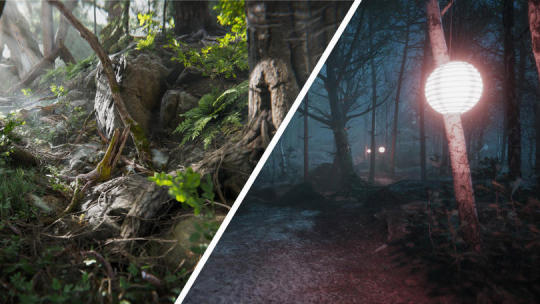
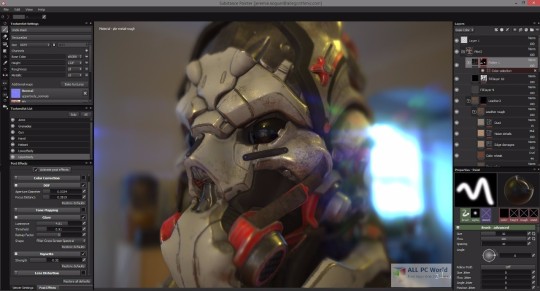
Real-time rendering: In 2023, real-time rendering technology has advanced significantly, and it's becoming more accessible for designers and animators and it comes with several advantages, including:
Increased efficiency: Real-time rendering allows animators to see the results of their work instantly, allowing them to make adjustments in real time. This can save time and resources that would otherwise be spent on rendering and re-rendering.
Improved interactivity: Real-time rendering allows for greater interactivity between the viewer and the 3D animation, allowing for more immersive experiences. This is particularly important in gaming and virtual reality applications.
Greater realism: Real-time rendering allows for more realistic lighting, shadows, and textures, which can improve the overall quality of the animation.
Greater flexibility: Real-time rendering allows animators to make changes to the animation on the fly, which can be particularly useful in collaborative workflows.
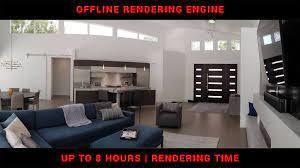
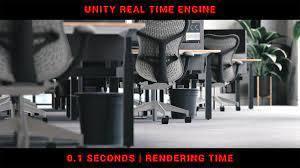
This technology enables 3D animations to be rendered in real-time, making the animation process faster and more efficient due to advancements in computer hardware and software and the key developments in this area are the improvement of hardware, new machine learning, cloud rendering and lots of real-time ray tracing.
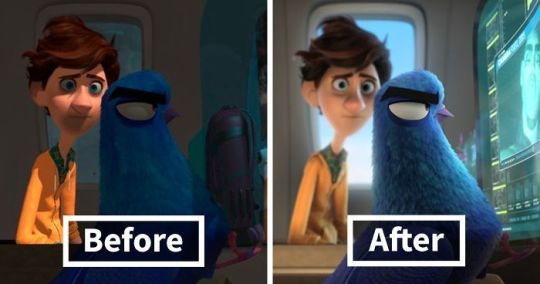
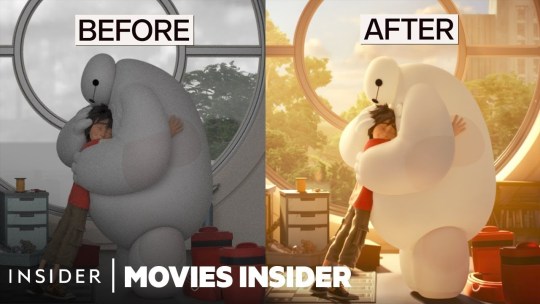
In summary, real-time rendering of 3D animation is becoming an increasingly important tool for animators and content creators and is likely to continue to develop and improve in the coming years.
______________________________________________________________
My attempt at real-time rendering:
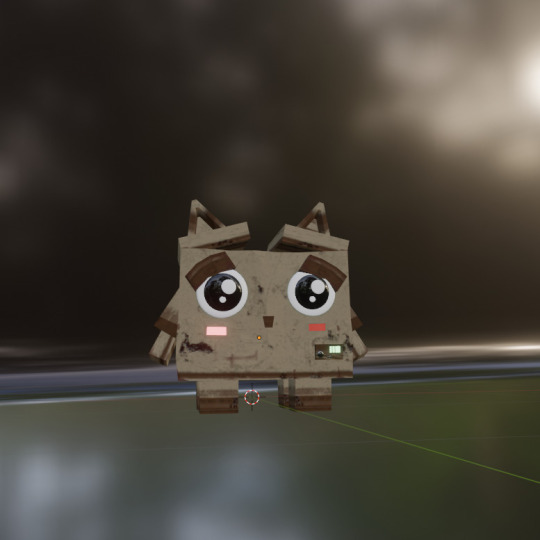
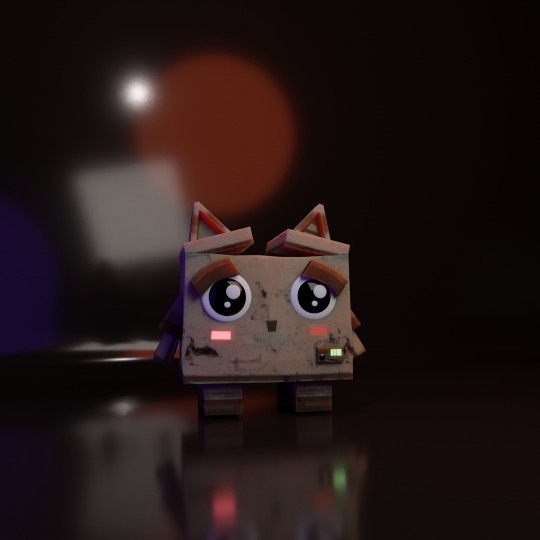
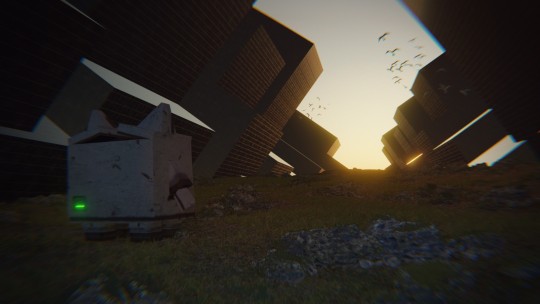
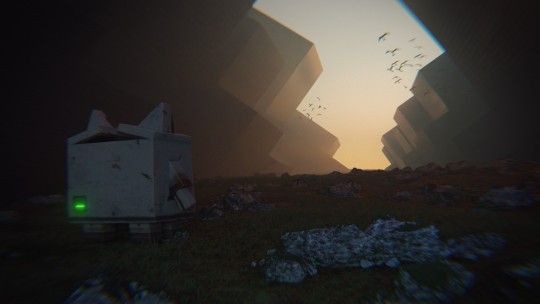
Left low-quality :Eevee Right high-quality: Cycles
I have tried different settings for rendering both Eevee and Cycles in a sunset scene that will be in the animation.
I have experimented using the old and the new render settings for both quality types and the old ones took :
old setting low-quality time: around 28 min
old setting high-quality time: around 1 and a half hour
but after more experimenting fast-rendering and tutorials online:
new setting low-quality time: a few sec!!!!
new setting high-quality time: 10 mins only!!!!!
Overall, the conclusion after the fast-render experiment, the development of technology through the years has enabled 3D animation process extremely faster and more efficient due to advancements and rapid development of computer hardware and software so we will be expecting higher quality and 3D developments within the years in future.

0 notes